
Sony Interactive Entertainment (SIE) is a multinational video game and digital entertainment company owned by multinational conglomerate Sony. SIE primarily operates the PlayStation brand of video game consoles and products. SIE is made up of two legal corporate entities: Sony Interactive Entertainment LLC (SIE LLC) based in San Mateo, California, and Sony Interactive Entertainment Inc., based in Minato, Tokyo. SIE Inc. was originally founded as Sony Computer Entertainment Inc. in November 1993 to handle Sony's venture into video game development for the PlayStation systems. SIE LLC was established in San Mateo in April 2016, and is managed through Sony's American branch, Sony Corporation of America.

Castlevania: Dawn of Sorrow is a 2005 action-adventure game developed and published by Konami. It is part of Konami's Castlevania video game series and the first Castlevania game released on the Nintendo DS. The game is the sequel to Castlevania: Aria of Sorrow and incorporates many elements from its predecessor. Dawn of Sorrow was commercially successful. It sold more than 15,000 units in its first week in Japan and 164,000 units in the United States during the three months after its initial release.
FromSoftware, Inc. is a Japanese video game development and publishing company based in Tokyo. Founded by Naotoshi Zin in November 1986, the company developed business software before releasing their first video game, King's Field, for the PlayStation in 1994. Its success shifted FromSoftware to focus fully on video games, with them producing two more King's Field games before creating the mecha combat series Armored Core (1997), one of their flagship franchises.

An action role-playing game is a subgenre of video games that combines core elements from both the action game and role-playing genre.

PlayStation Broadband Navigator was a software program for Japanese PlayStation 2 consoles that provides an interface for manipulating data on PlayStation 2 HDD Unit.

Devil Summoner: Soul Hackers is a role-playing video game developed by Atlus. The game is the second installment in the Devil Summoner series, itself a part of the larger Megami Tensei franchise. Originally published by Atlus for the Sega Saturn in 1997, it was later ported to the PlayStation in 1999, and Nintendo 3DS in 2012.
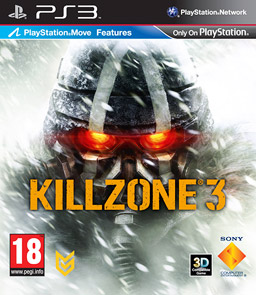
Killzone 3 is a 2011 first-person shooter video game for the PlayStation 3, developed by Guerrilla Games and published by Sony Computer Entertainment. It is the fourth installment in the Killzone series, the first game in the series to be presented in stereoscopic 3D, and the first to include motion controls using the PlayStation Move. It is a direct sequel to Killzone 2. It was released worldwide in February 2011 to positive reviews.
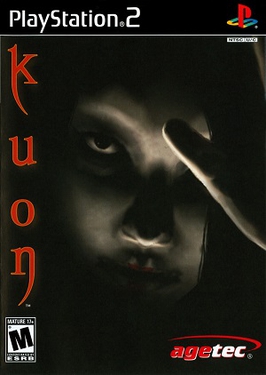
Kuon is a 2004 survival horror video game developed by FromSoftware for the PlayStation 2. Published by FromSoftware in Japan, it was released in North America by Agetec, and in Europe by Nobilis and Indie Games Productions in 2006. The narrative takes place in Japan's Heian period, and follows the actions of three protagonists during an outbreak of monsters at Fujiwara Manor in Kyoto; Utsuki, daughter of the onmyōji Ashiya Doman, Doman's apprentice Sakuya, and the veteran onmyōji Abe no Seimei. Gameplay has the different characters exploring the grounds and buildings of Fujiwara Manor, solving puzzles and fighting off hostile monsters.

Otogi: Myth of Demons, is a 2002 action video game developed by FromSoftware and published by Sega. It was released for the Xbox in Japan in December 2002, by Sega in North America in August 2003, and Europe in September 2003. Otogi follows former executioner Raikoh Minamoto as he attempts to purge the demons that have overrun Japan and restore the Great Seal that kept them at bay. It received positive reviews and was followed by a sequel, Otogi 2: Immortal Warriors, in 2003.
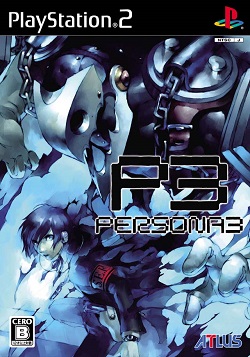
Persona 3, released outside Japan as Shin Megami Tensei: Persona 3, is a 2006 role-playing video game developed by Atlus. It is the fourth main installment in the Persona series, which is part of the larger Megami Tensei franchise. Atlus originally released the game for the PlayStation 2 in Japan in July 2006; the North American release of the game was delayed until 2007 due to issues with the publication of the official art book. Persona 3 FES, an extended version containing a new playable epilogue among other changes, was released in Japan in 2007 and worldwide the following year.

King's Field is a 1994 action role-playing game by FromSoftware for the PlayStation. Their debut video game project after developing business software for eight years, it was the first game in the King's Field series and has players navigating a vast underground labyrinth to discover the source of an invasion of monsters. Attacking and using spells are tied to a stamina meter, which is depleted with each action and must refill before the player can act again.

PlayStation Home was a virtual 3D social gaming platform developed by Sony Computer Entertainment's London Studio for the PlayStation 3 (PS3) on the PlayStation Network (PSN). It was accessible from the PS3's XrossMediaBar (XMB). Membership was free but required a PSN account. Upon installation, users could choose how much hard disk space they wished to reserve for Home. Development of the service began in early 2005 and it launched as an open beta on 11 December 2008. Home remained as a perpetual beta until its closure on 31 March 2015.
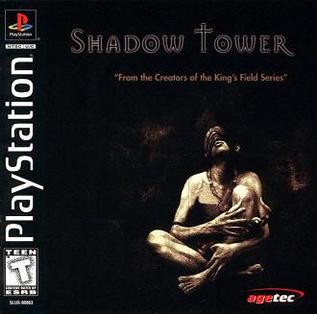
Shadow Tower is a 1998 role playing video game developed by FromSoftware for the PlayStation. The game was originally released in Japan on June 25, 1998 and in North America on November 19, 1999. In North America, the game was published by Agetec. Shadow Tower shares many similarities with the King's Field series of video games. A sequel, Shadow Tower Abyss, was released for the PlayStation 2 exclusively in Japan.
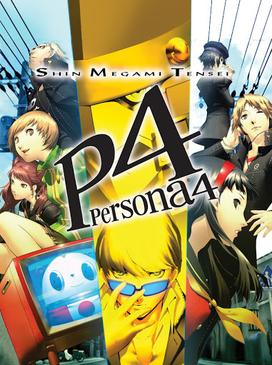
Persona 4, released outside Japan as Shin Megami Tensei: Persona 4, is a 2008 role-playing video game by Atlus. It is chronologically the fifth installment in the Persona series, itself a part of the larger Megami Tensei franchise, and was released for the PlayStation 2 in Japan in July 2008, North America in December 2008, and Europe in March 2009 as one of the final major exclusives for the system. It was re-released as a PlayStation 2 Classic for the PlayStation 3 in April 2014. Persona 4 takes place in a fictional Japanese countryside and is indirectly related to earlier Persona games. The player-named protagonist is a high-school student who moved into the countryside from the city for a year. During his year-long stay, he becomes involved in investigating mysterious murders with a group of friends while harnessing the power to summon physical manifestations of their psyches known as a Persona.

Demon's Souls is a 2009 action role-playing game developed by FromSoftware for the PlayStation 3 under the supervision of Japan Studio. It was published in Japan by Sony Computer Entertainment in February, in North America by Atlus USA in October, and in PAL territories by Namco Bandai Partners in June 2010. The game is referred to as a spiritual successor to FromSoftware's King's Field series.
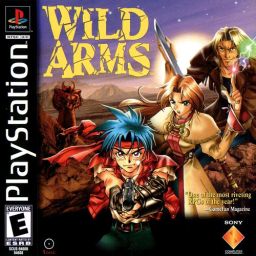
Wild Arms is a role-playing video game developed by Japanese company Media.Vision. Originally released in Japan in 1996 for the PlayStation, it was later translated and released in North America in 1997 and Europe in 1998 by Sony Computer Entertainment. It features a fantasy setting and motif and 2D computer graphics for normal gameplay, while battle sequences are rendered in 3D.
Atlus West, formerly known as Atlus U.S.A., Inc., is the North American publishing branch of Japanese video game company Atlus, primarily known for localizing games for both them and other third-party developers. Its first original role-playing game was Revelations: Persona on the PlayStation, described by staff as an attempt to break into the Western role-playing game market and establish the company's Megami Tensei franchise through its Persona sub-series.
Dark Souls is a series of action role-playing games created by Hidetaka Miyazaki of FromSoftware and published by Bandai Namco Entertainment. The series began with the release of Dark Souls (2011) and has seen two sequels, Dark Souls II (2014) and Dark Souls III (2016). Dark Souls has received critical acclaim, with the first title often cited as one of the greatest in video games, with the series as a whole being both praised and criticized for its high level of difficulty.

Demon's Souls is a 2020 action role-playing game developed by Bluepoint Games and published by Sony Interactive Entertainment for the PlayStation 5. The game was released as a launch title for the PlayStation 5 in November. It is a remake of Demon's Souls, originally developed by FromSoftware for the PlayStation 3 in 2009. Japan Studio assisted on its development, which makes Demon’s Souls its last game before its merger with Team Asobi. Demon's Souls received critical acclaim from critics, who praised its gameplay, visuals, technical aspects, and improvements over the original game. It sold over 1.4 million copies by September 2021.
Echo Night is a trilogy of Japanese adventure games developed by FromSoftware. The original Echo Night was first released in 1998 for the PlayStation. Two sequels were developed; Echo Night 2: The Lord of Nightmares for the PlayStation in Japan in 1999, and Echo Night: Beyond for the PlayStation 2 which released worldwide between 2004 and 2006. All the titles feature a protagonist called Richard pursuing a magical artifact and interacting with ghosts. Titles are played from a first-person perspective, and place a focus on puzzles and exploration.
















